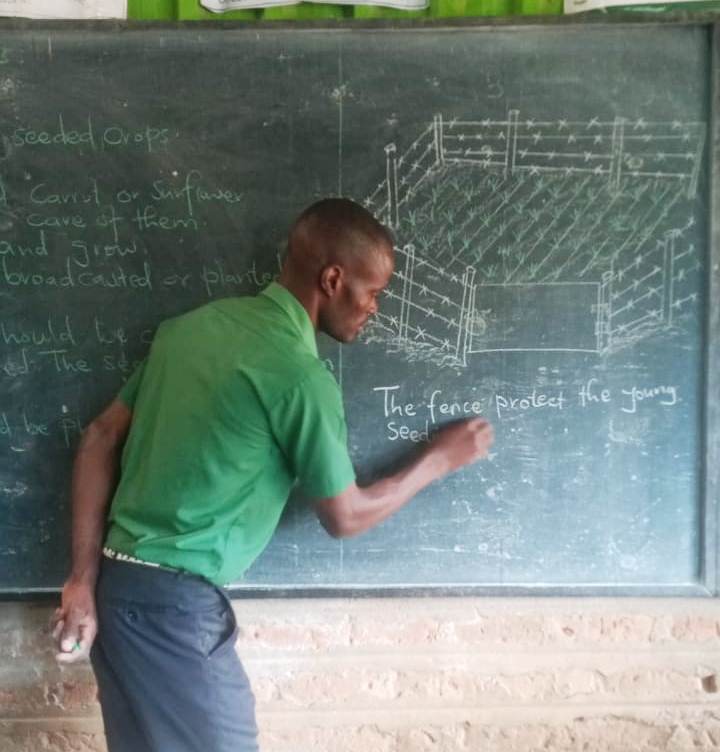Great teachers are not only defined by their mastery of subject matter but by the lasting impressions they leave on their students. While grand gestures or revolutionary teaching methods can capture attention, it’s often the small, consistent actions that have the most significant impact. These seemingly minor behaviors foster growth, build confidence, and inspire lifelong learning in students. In this article, we explore five small things that great teachers do, which make a profound difference.
- Personalized attention
One of the defining characteristics of a great teacher is the ability to see each student as an individual with unique needs, strengths, and learning styles. Personalized attention goes beyond just knowing a student’s name; it involves understanding their academic challenges, personal struggles, and what motivates them.
For instance, a teacher who notices that a student struggles with math might offer extra help after class or suggest alternative learning materials tailored to their pace. These small acts show students that their teacher genuinely cares about their progress, making them more likely to engage and put in the effort to improve.
Moreover, personalized attention builds trust. When students feel seen and understood, they are more willing to take academic risks. They feel safe to ask questions and share their ideas, knowing their teacher is invested in their success. Over time, this personalized approach can drastically improve a student’s confidence, resilience, and academic performance.

- Positive reinforcement
The power of positive reinforcement cannot be overstated. Great teachers understand that encouraging students for their efforts and small victories can boost their motivation. A simple “well done,” a sticker, or a few words of acknowledgment can go a long way in making students feel proud of their achievements, no matter how small they may seem.
Rather than only praising top performers, great teachers recognize incremental progress. For instance, if a student who typically struggles with writing turns in an essay with fewer grammatical errors than before, a great teacher will celebrate that improvement. This shows the student that effort is valued just as much as excellence. Positive reinforcement nurtures a growth mindset, where students believe they can develop their abilities through hard work and perseverance.
By focusing on the process rather than just the outcome, teachers create an environment where students are not afraid to fail. They understand that mistakes are part of the learning journey, and the praise they receive for their effort encourages them to keep trying. Over time, students internalize this positive feedback, leading to greater self-confidence and a love for learning.
- Active listening
In a fast-paced classroom, it can be easy for students to feel overlooked. However, great teachers make an effort to listen attentively to their students. Active listening is more than just hearing what a student says; it involves making eye contact, showing empathy, and responding thoughtfully to their concerns.
When a student feels listened to, they are more likely to open up and express themselves. For example, if a student shares that they’re feeling anxious about an upcoming test, an attentive teacher might offer words of encouragement, suggest study strategies, or adjust deadlines if possible. By doing so, the teacher shows that they respect the student’s feelings and are willing to support them.

Active listening also allows teachers to catch underlying issues that may affect a student’s academic performance. A student who appears disengaged or disruptive might be struggling with challenges at home, such as family problems or mental health issues. A great teacher’s ability to listen and respond with empathy can make all the difference in helping the student feel supported and understood.
- Creating a safe learning environment
A safe and welcoming learning environment is crucial for student success. Great teachers understand that students perform best when they feel emotionally and intellectually secure. They work hard to foster a classroom atmosphere that encourages curiosity, exploration, and respectful discourse.
One way great teachers create this environment is by normalizing mistakes as part of the learning process. Instead of shaming students for getting an answer wrong, they frame errors as learning opportunities. This approach reduces anxiety and helps students develop resilience.
Additionally, a safe learning environment is one where students feel free to express themselves without fear of judgment. Whether it’s contributing to class discussions, sharing a creative project, or asking questions, students need to feel their voices are valued. A great teacher cultivates respect among students, ensuring that no one is ridiculed or belittled for their ideas.
In such environments, students are more likely to take risks, explore new ideas, and grow intellectually. They feel a sense of belonging, which enhances their overall learning experience.

- Connecting learning to real life
Great teachers have a talent for making their lessons relevant to students’ lives. Instead of presenting abstract concepts that feel disconnected from reality, they find ways to demonstrate how learning applies to the world beyond the classroom.
For instance, a science teacher might relate the study of ecosystems to environmental issues students can observe in their communities. A history teacher might compare historical events to current social movements, helping students draw parallels and see the relevance of what they’re learning. These connections not only make lessons more engaging but also help students develop critical thinking skills.
By showing students how their education impacts their daily lives and future goals, great teachers instill a sense of purpose in their studies. This relevance fuels curiosity and encourages students to continue learning beyond the confines of the classroom.
While the influence of great teachers is often attributed to their subject knowledge or classroom management skills, it is the small, everyday actions that leave the deepest marks. Personalized attention, positive reinforcement, active listening, creating a safe learning environment, and connecting lessons to real life are subtle but powerful ways great teachers make an impact. These small gestures foster a positive learning experience, building a foundation of trust, confidence, and a lifelong love for learning in their students.
By Kamomonti wa Kiambati
Kamomonti teaches English and Literature in Gatundu North Sub County.
You can also follow our social media pages on Twitter: Education News KE and Facebook: Education News Newspaper for timely updates.
>>> Click here to stay up-to-date with trending regional stories
>>> Click here to read more informed opinions on the country’s education landscape





